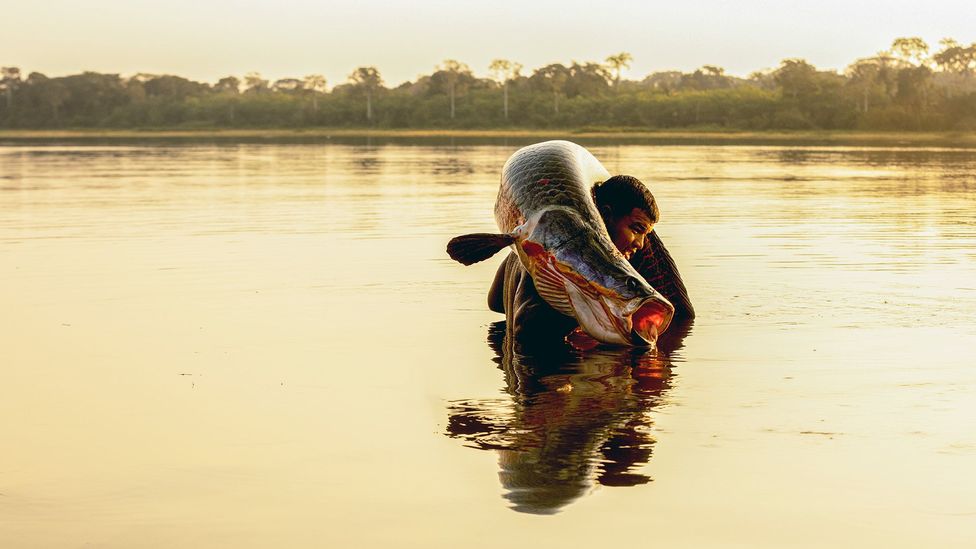
Jairo Natorce’s surveillance post in Lake Yarina, deep in Peru’s Amazon rainforest, does not have water or electricity. He works alone in this part of the park on the banks of a river full of piranhas and alligators. Here, he has one sole purpose: to protect one of the greatest biodiversity hotspots on the planet and, particularly, a colossal prehistoric fish called paiche.
For the past 20 years, Natorce has been one of the park rangers in charge of protecting Pacaya Samiria National Reserve, the largest nature reserve in Peru that’s more than two million hectares – half the size of Denmark or Switzerland. The reserve was created in 1972 mainly for the conservation of arapaima gigas, better known in the region as paiche or pirarucu, the second-largest river fish in the world.
According to a Brazilian legend, the paiche is a mythological creature with origins in a ruthless warrior named Pirarucu, who – due to his extreme cruelty – was damned by gods to be preyed upon by storms, thunder and lightning. Cornered without escape, Pirarucu hid himself in the river where he eventually morphed into a giant fish with thick red scales.
The paiche has been fished since time immemorial in the inhospitable rivers and lagoons of the Amazon. The firm, white-fleshed fish has historically been salted and dried like bacalao (salt cod), steamed and eaten with rice or yuca, or added to soups and stews. And while the nutritious, lean and exquisite delicacy is popular in the Amazonian diet, paiche was long unknown outside the region.
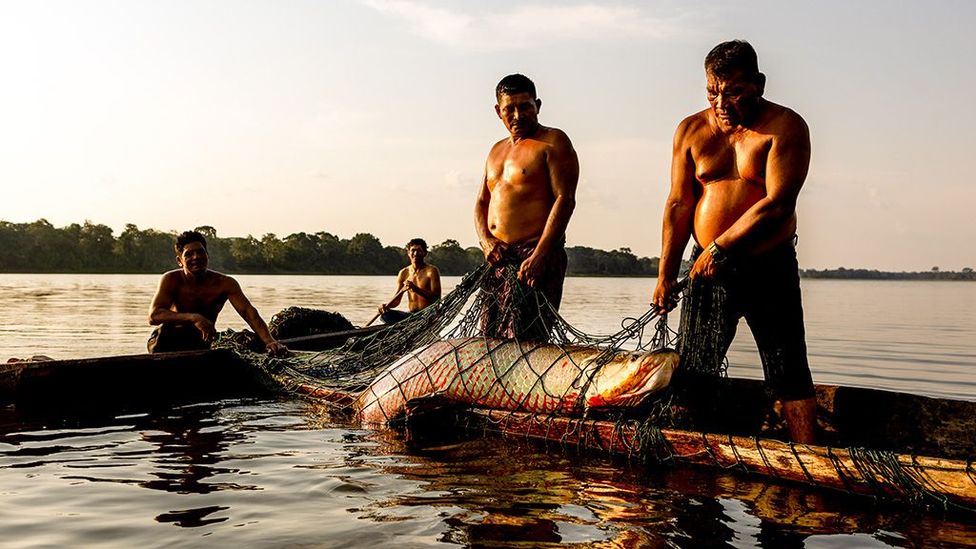
Fisherman haul in a 100kg paiche in the Pacaya Samiria Reserve (Credit: Manuel Vazquez)
But since 2004, paiche has been making its way into Peruvian haute cuisine in part thanks to the work of chef Pedro Miguel Schiaffino, who opened his first restaurant, Malabar (now closed), in Lima that year. In addition to Malabar, the so-called “chef of the jungle” opened another Amazonian-inspired restaurant called ámaZ in 2012 (now closed). Since then, leading Peruvian chefs have started to work with paiche and it is now present on menus in restaurants such as Maido, Central, Mayta and La Rosa Náutica, where Schiaffino is currently head chef.
“There is something that connects me, that attracts me to the jungle,” Schiaffino said. “It is a super abundant territory, but, at the same time, very fragile. [Amazonians) have a traditional knowledge about their products, the use of them is related to health and having a balance in life.”
Schiaffino has been researching Amazonian products for more than 15 years. He was a pioneer in introducing rainforest ingredients into his dishes, travelling to the most remote communities to personally get to know the local producers. For him, the mission of his cuisine is linked to the quest for harmony between nature, those harvesting it, and traditional Amazonian ingredients like paiche.
“The paiche has delicious, white, semi-fatty meat with few bones and therefore [is] very versatile for cooking,” said Schiaffino. He has prepared dishes such as paiche ceviche, grilled paiche, paiche ribs, and paiche with ají negro (a spicy fermented sauce) or tucupí, a thick sauce made from yuca brava (a poisonous plant they have managed to turn into a central foodstuff ) that is cooked by women from the Bora and Huitoto ethnic groups in Paucarquillo, Loreto.
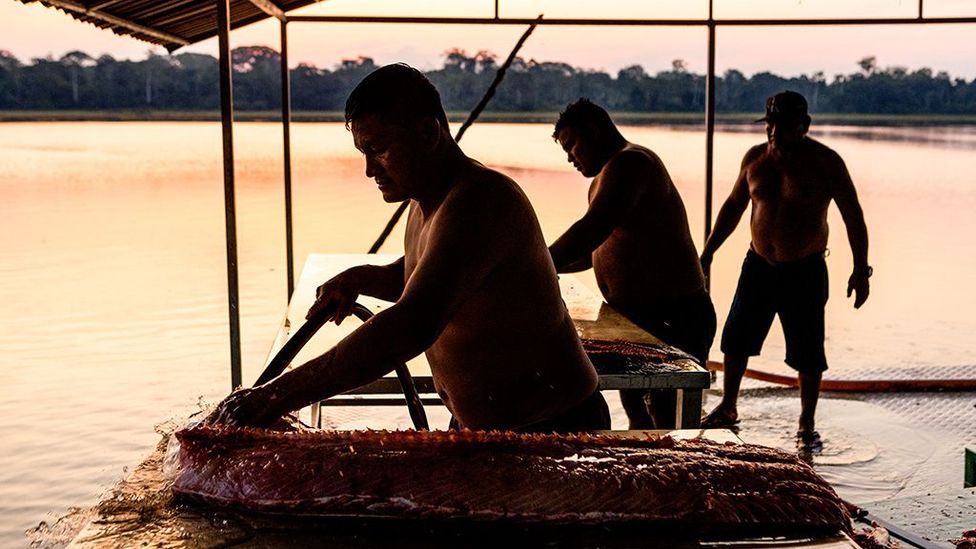
The paiche has delicious, white, semi-fatty meat with few bones (Credit: Manuel Vazquez)
“It is very difficult for products from the Amazon region to enter the city, but paiche has had a great acceptance, which has a positive impact on the communities,” said Francesca Ferreyros, chef and owner of Baan, a renowned restaurant in Lima. “I am interested in the paiche not only because of its flavour and versatility, but also because it has allowed us to look at river fish, especially in Lima, a coastal city where we are used to eating seafood.”
In the past, to transport the fish to the city and keep it in good condition, ice had to be purchased in Iquitos, which is 10 hours by boat and two hours by road from Pacaya Samiria. The transport was very rudimentary, the water quality was not good, and the cost of the ice raised the price of the fish considerably. In response to this, in 2017, the non-governmental organization, Despensa Amazónica, in collaboration with other private and public entities, promoted the construction of a solar-powered ice plant. They encouraged women from the village of Bretaña, located 90 minutes by boat from Lake Yarina (where paiche is sustainably fished), to work there and consequently become part of the paiche production chain, in which previously only the men of the community participated.
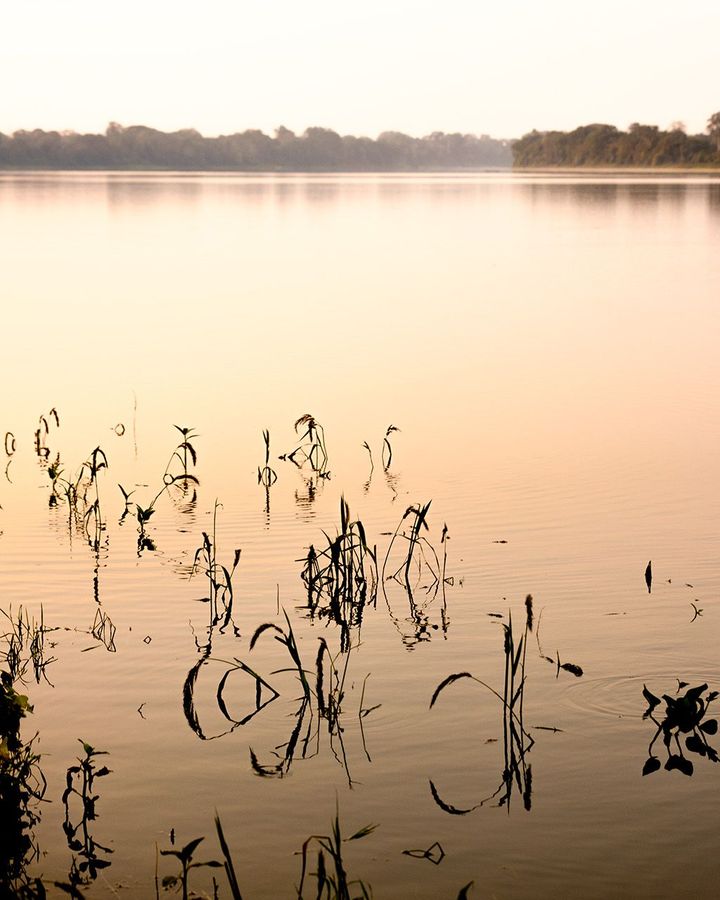
The sun sets at the Reserva Pacaya Samiria in Yarina, Peru (Credit: Manuel Vazquez)
Thanks to the arrival of ice, the paiche is now safely transported from the reserve to the city of Iquitos and then on to Lima, where it is distributed to the capital’s most exclusive restaurants. And the explosion of Peruvian cuisine around the globe has brought sustainably farmed paiche to top-end Peruvian restaurants worldwide.
It soon became evident to Despensa Amazónica that by creating markets and improving the local communities’ technical and operational skills, an engine for social change had been ignited. Ventures such as those supporting a sustainable paiche industry help locals to secure their food supply, provide them with a stable economic income for their families and, at the same time, help them protect their habitat. It also encourages communities to stay away from the most prevalent – and lucrative – predatory activities in the region, such as illegal mining, logging and wildlife trafficking which put their lives and the environment at risk.
THREATS TO THE PERUVIAN AMAZON
The Amazon rainforest is the largest tropical forest in the world. It extends over nine countries and occupies 60% of Peru. Its existence contributes decisively to the stability of the global climate. However, there are serious threats to its preservation. In 2020 alone, Peru lost 203,000 hectares of forest, due to agricultural expansion as well as illegal activities like timber trafficking for exportation and illegal mining for valuable natural resources like gold.
The paiche itself has also experienced hardships due to overfishing and the lack of controls to ensure compliance of minimum catch sizes or closed seasons. But there are ongoing efforts to change things.
Back in Lake Yarina, 12 local fisherman have embraced the movement towards rebuilding the health of the Amazon. They are part of fishing cooperatives focused on sustainable fishing, using canoes and nets to fish in the traditional way. They also respect the fishing seasons and the minimum catch sizes, and, above all, they protect their ecosystem at any cost by reporting illegal fishermen who engage in wildlife trafficking and forest depredation.
“In these years of work, we have developed a model that we believe is scalable and transferable,” said Andrea Ortiz de Zevallos, managing director of Despensa Amazónica. “Our idea is to create and find as many market opportunities as possible, so that sustainable activities become sufficient to support local economies, which could prove wrong the idea that the only way to generate income in the Amazon is through extractive or illegal activities.”
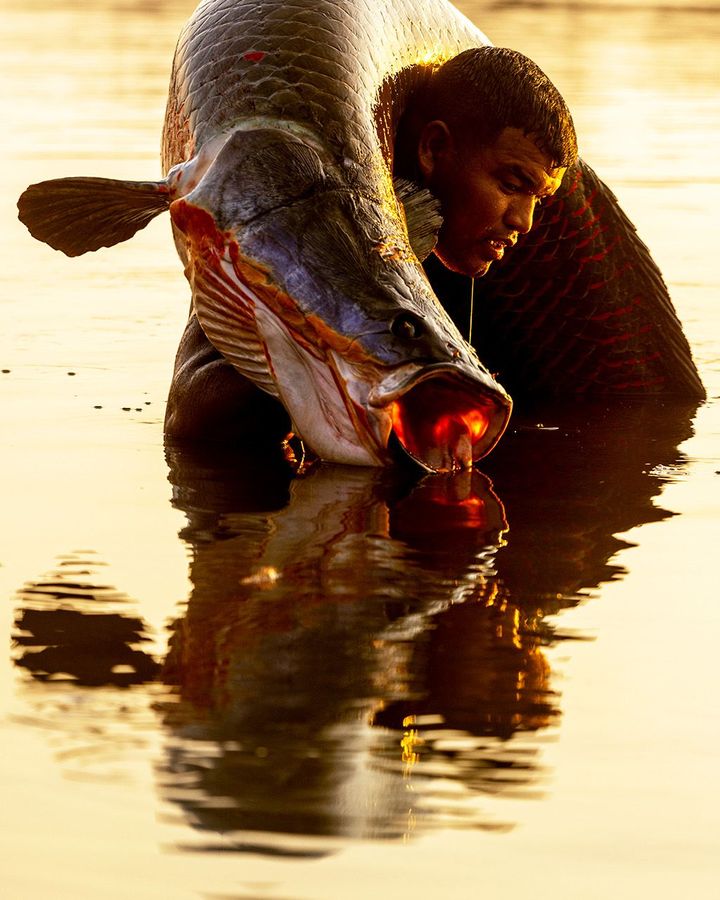
Watson Flores carries the paiche from the canoe to the shore for cleaning and filleting (Credit: Manuel Vazquez)
Fortunately, Natorce is no longer alone in his quest as he has been joined by the growing group of passionate people who seek, above all, to protect the Amazon rainforest and its bounty. And as an added benefit, more people can enjoy the taste of foods like the paiche – sustainably.
“The idea was to enable products [such as paiche] from one of the richest ecosystems on the planet to reach professional gastronomy,” said Ortiz de Zevallos. “Our projects support local communities to develop and strengthen sustainable value chains, and ultimately integrate their products into Peruvian and global cuisine.”
For chef Schiaffino, these efforts are a win-win. “I find joy in proving that a product can reach a restaurant in the best conditions,” he said. “The most emotional part, which also pushes me to keep going, is that a family or an entire community can significantly improve their livelihood. From a personal point of view, traveling and seeing this journey is just beautiful.”
BBC.com’s World’s Table “smashes the kitchen ceiling” by changing the way the world thinks about food, through the past, present and future.
—
Join more than three million BBC Travel fans by liking us on Facebook, or follow us on Twitter and Instagram.








